Text
Oh, I forgot to mention. I started keeping a small maple tree in a pot last year or so. It’s maybe eight inches tall. I repotted it this year in early spring to check on the root development and it’s doing well, and didn’t seem to suffer from any transplant shock! This is my second try keeping a maple in a pot-- the last one died a few years ago, I think because I had no idea how to care for the roots in a small pot. I want it to stay small, but bushy. Not necessarily a true, sculpted bonsai, but sort of a bonsai.
I also have been checking on the roses in my yard. My mother doesn’t believe me that dark red adult leaves mean the plant is getting too much sun, but two of them have dark red adult leaves and we can’t move them because those two are the ones who are routinely the weakest plants. The smaller rose I moved from across the yard is actually looking much healthier this year! I’m surprised that it bounced back at all. My baby rose that I got for my birthday last year is looking bushy and is covered in adorable glossy leaves and brand new pink thorns. I’m looking forward to her blossoms this year, since this will be the first year she blooms without pesticides all over her from the nursery. I like roses a lot, in case you couldn’t tell. All the roses in our yard are yellow or white-- we used to have pink but that plant died.
My mint plant is looking.... a little haggard. I’m not sure why, since mint is supposed to be one of those terror plants that you can’t stop from growing, but the adult stalks are mostly naked and the dirt around it is littered with dead mint leaves. I’m hoping it comes back in nice and bushy because nothing beats fresh mint tea.
A while ago (about three weeks) my mom and I bought some spider plants from a hardware store. I chose them specifically because they’re known to be nigh unkillable, and are safe for kitties. My mother’s was split and repotted to hang near some SE facing windows in indirect sunlight. Mine was not split (I’ll be doing that this week, it’s actually three plants) and has been living in my half-underground bedroom with only a sun lamp. Mine has grow several inches in the three weeks I’ve owned it, with dark, vibrant, happy leaves. The two babies are trying to shove the larger papa plant out of his pot. My mother’s are still the same size as when we bought them.
I really wish I knew why mine are doing so well. It could be the red lights I use for my migraines, or the fact that I put him in terra cotta instead of a glazed pot with no drainage, like my mother’s. It could be that he lives in my bedroom, which is a magically charged environment. Whatever it is, he and his babies are very happy. In a few days I’m going to move the babies to their own pots– the middle sized one is named Ophelia, and I think the littlest may be a Henry. The big one may also be a Henry. It’s hard to tell with how close they’re pressed together.
I’m excited to have plants in my room, finally. I always wanted plants, but I don’t have a very good green thumb and also…. my room gets zero sunlight so I didn’t think it was possible. I’m not really sure where I’ll put Ophelia or her brother yet since I don’t have much space in my room, but I’m happy to have them nonetheless.
6 notes
·
View notes
Text
A while ago (about three weeks) my mom and I bought some spider plants from a hardware store. I chose them specifically because they’re known to be nigh unkillable, and are safe for kitties. My mother’s was split and repotted to hang near some SE facing windows in indirect sunlight. Mine was not split (I’ll be doing that this week, it’s actually three plants) and has been living in my half-underground bedroom with only a sun lamp. Mine has grow several inches in the three weeks I’ve owned it, with dark, vibrant, happy leaves. The two babies are trying to shove the larger papa plant out of his pot. My mother’s are still the same size as when we bought them.
I really wish I knew why mine are doing so well. It could be the red lights I use for my migraines, or the fact that I put him in terra cotta instead of a glazed pot with no drainage, like my mother’s. It could be that he lives in my bedroom, which is a magically charged environment. Whatever it is, he and his babies are very happy. In a few days I’m going to move the babies to their own pots-- the middle sized one is named Ophelia, and I think the littlest may be a Henry. The big one may also be a Henry. It’s hard to tell with how close they’re pressed together.
I’m excited to have plants in my room, finally. I always wanted plants, but I don’t have a very good green thumb and also.... my room gets zero sunlight so I didn’t think it was possible. I’m not really sure where I’ll put Ophelia or her brother yet since I don’t have much space in my room, but I’m happy to have them nonetheless.
6 notes
·
View notes
Photo
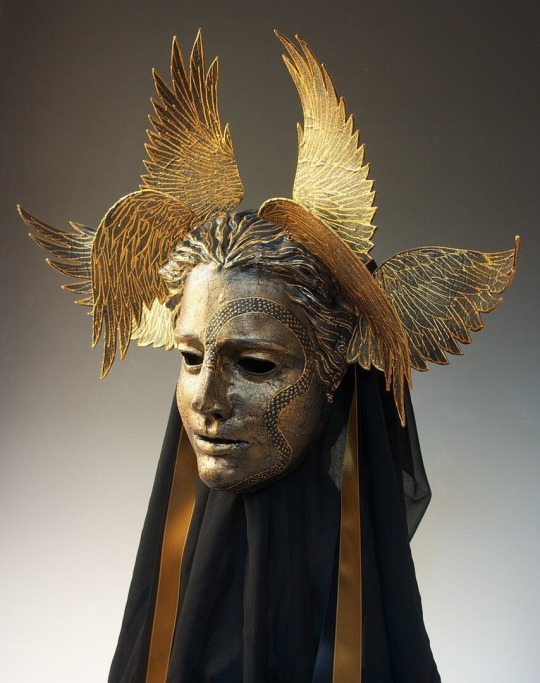

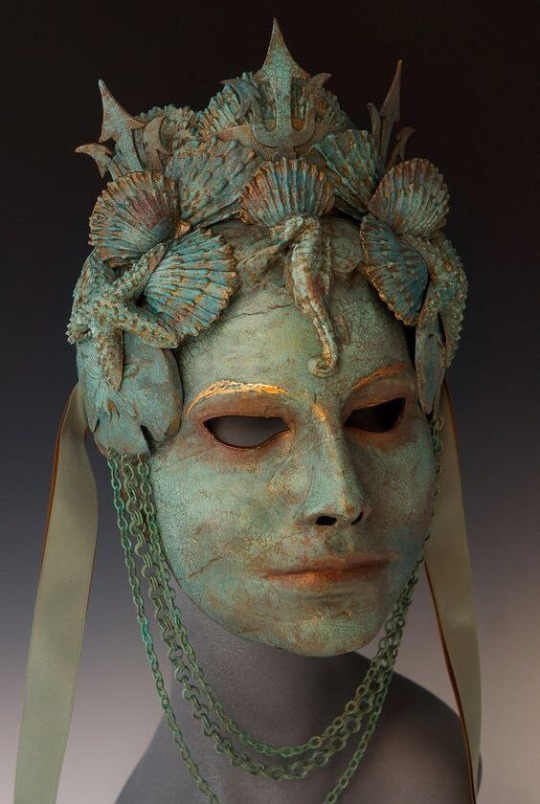
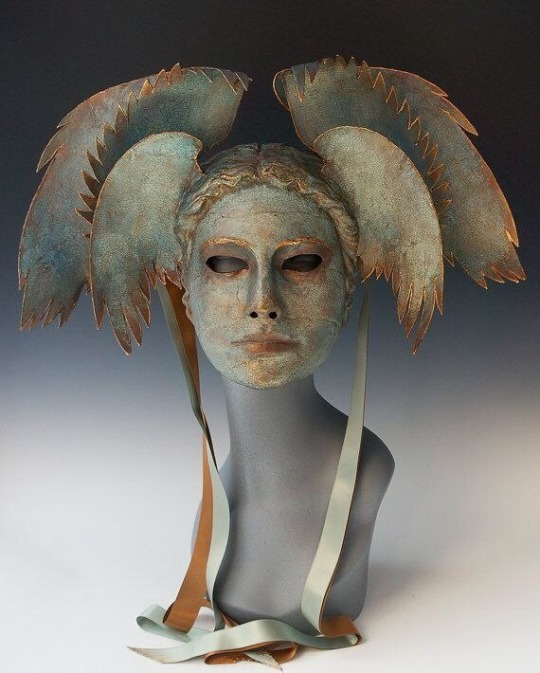
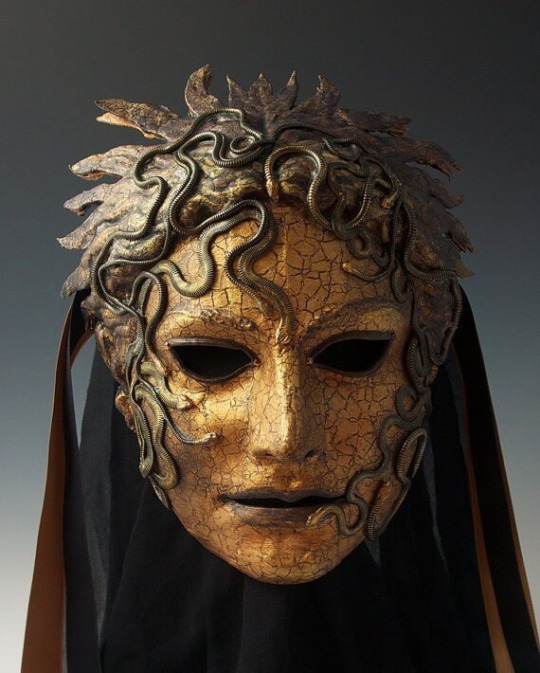



TheArtOfTheMask
#2, #3, #4, #5
Hajandradeye’s Post
Info
85K notes
·
View notes
Photo

Pomegranate brooches by Armenian designer Narinée Tchilinguirian
4K notes
·
View notes
Note
Dear Diana! I'm really so happy to have found someone who views astrology as sacred and pagan instead of some pseudoscience, trying to look like a branch of maths shit that sounds so boring and high school textbook lol! <Seriously these people make astrology sound so dull, yuck> My question is kinda related but not really. How does traditional witchcraft view shooting stars please? <still on the topic of stars :D> All my love!
What a Shooting Star Means in Traditional Witchcraft
A Banquet in the Skies
According to the old tales, when it is raining, the gods are weeping. When there is thunder, the gods are fighting. And when there is a shooting star, the gods are dancing. A falling star is like wine spilling from their cups. It means the gods are in great mood. So if you pray at this time, you are likely to receive a fortune.
A New Soul is Born
My mother’s family believes that there is a definite number of souls reincarnating in our world. My father’s family disagrees. They say that new souls are still being born. That right after its birth, a new soul rides a star to earth. And that a pregnant woman who sees this falling star is given the privilege to raise not just a human child but an infant soul.
A Soul Leaves Purgatory
The Catholic witches in my community tell a very different story. They believe that a shooting star is a soul exiting purgatory. That the Holy Trinity grants them light and flight, to show other trapped souls – both in purgatory and on earth – that they too can have such freedom if they are willing to do the work.
A Grieving God
Humans light a candle for a loved one who has passed. So do the old gods. Every now and then, they form a special bond with a mortal child. And in my family’s belief, when that soul reincarnates, it is unlikely to have the same faith, much less the same divine parent. And so the god sends down a candle to say farewell.
A God's Promise
Speaking of the gods’ favorite children, we believe that a pagan witch catching sight of a shooting star means our divine parent is saying yes to whatever it is we asked. More abundance… new love… an enemy’s demise… A falling star carries with it the words: "Be patient one more day. Your wish is on the way."
237 notes
·
View notes
Text
lesser-known hellenic deities that deserve more love

i might do a more in-depth analysis of some of these deities’ lores later but for now here’s a short lil list. these are all deities i’ve either worked with or would like to work with in the future, so if you notice i’m omitting some that’s probably why (or i just forgot lol).
1. Bia - goddess of force and power
2. Morpheus - god of dreams
3. Nyx - goddess of the night and darkness
4. Aether - god of the upper sky
5. Phoebe - goddess of radiance and brightness
6. Hypnos - god of sleep
7. Psyche - goddess of the soul
8. Tyche - goddess of fortune (more famous by her Roman name, Fortuna)
9. Anagke - goddess of destiny
10. Echidna - goddess of monsters
11. Kronos - god of time and (sometimes) chaos (not necessarily lesser-known, i just don’t know anyone who’s worked with him)
12. Peitho - goddess of seduction and persuasion
13. Dike - goddess of justice
14. Sphrosyne - goddess of self-control
15. Terpsichore - goddess of singing and dancing
4K notes
·
View notes
Text
Magical Space in Witchcraft
Laying the Compass and Treading the Mill based on the Clan of Tubal Cain and 1734. Jives with a great deal of Traditional British Witchcraft.
Circle Casting from the Internet Book of Shadows.
The Four Cities and Seven Directions by RJ Stewart from the Western Esoteric Tradition and Faery Faith.
Guardians from House Shadow Drake an Irish Traditional Witchcraft website.
St. Patrick’s Breastplate and the Descent of Brighid protection prayers from Irish and Scottish Catholic traditions.
Land, Sea and Sky a blessing ritual from Gaol Naofa a Celtic Recon group.
Circle Casting and the World Tree an essay about circle casting and witchcraft by Sarah Lawless.
Calling the Quarters an essay about different types of circles by Christopher Penzack
1K notes
·
View notes
Text
Forefathers Eve
Before we get into the nitty gritty of the celebration itself, I feel like there is something important we should consider beforehand; how the old slavs treated the dead and especially dead ancestors. Polish ethnographers from as far as the 19th century have described the common folk believing in the immortality of the soul, and death being a natural part of existence, a simple transition into the world of the dead, which in slavic folklore was heavily interwoven with the world of the living.
Looking after and praying for the souls of one's relatives was an integral part of slavic spirituality. Some slavs believed that a soul could obtain a new physical form within their bloodline, in a process akin to reincarnation. Settlements would also have folks caring for so called ‘abandoned’ spirits, ones with no living relatives left on earth to look after them.
The ancient slavs believed that wellness of the soul after death was extremely important. Ancestors were often sought after for wisdom and protection from more malignant spirits, which the slavic spiritual world has in abundance. (PANKALLA, A. 2016) With death being seen as just another part of life and not at all a negative experience, there were many things our ancestors feared more, and those things would normally influence the soul post death. Sickness, murder, or any unfortunate event that would cut a life short was seen as worse than the death itself. Criminals and other restless souls were said to become various spirits known in slavic mythology. Rusalki and topielce for example were the souls of drowned folk, boginki were the souls of women who died in childbirth, strzygi and vampires were the souls of folks who took their own life or were not buried properly. Despite the often negative nature of these spirits however, folk believed that all could be appeased with the right gift and prayer.
Long story short… according to slavic myth, hope to die in your bed at the ripe old age of eighty, or not at all.
Rusalka’s Thoughts: The idea that ancestors are an important part of slavic worship is nothing new, but is often overlooked by people for a number of reasons. Perhaps, if you find yourself alone this Forefathers Eve, it may be a good idea to try and make a connection with some of your old ancestry. Something as simple as visiting the cemetery and taking care of the untended graves can be a form of veneration and care.
The original feast of Dziady (which in itself can be translated as ancestors, or forefathers) was held more than once a year (sources cannot agree as to whether this would be twice, or four times a year), around the new moon. This was because it was believed that the full moon was a little too troublesome for departed spirits. The fixed date of 2nd November, combined with the Christian feast of the All Faithful Departed (in Poland: of All Souls), had begun to be established around the 14th century in Poland, but even in the 19th century or early 20th century many people were still performing the old rites.
It is believed that during this time, spirits would visit their old homes, favourite spots and even places of worship. As such, a part of preparation for the festivities is cleaning the house and preparing it for the arrival of the old family (after all, nobody wants to get on grandma’s nerves with badly polished silverware) Paths leading to a place where the Forefathers Eve rite was performed would be decorated with rows of candles or small fireplaces (Piesta, J. 2013). The fire was meant to be lit after dusk, and it was meant to lead and warm up the souls arriving for the rite. Place of the invocations was always chosen very precisely, and very often took place next to an oak tree, believed to help in connecting with the ‘other side’.
During this time, it was also custom to give gifts to local beggars. Old slavs believed that these folk had a special connection to the other side, and that spirits would sometimes take the form of homeless folk and freely walk around. (GROCHOWSKI, P. 2009) If treated well, they would give wisdom, allow one to commune with their deceased relatives or even simply repay the kindness one day. An old Polish custom was to treat beggars with small amounts of food, money and drink in exchange for prayer (SITKO, A. 2015)
During Forefathers Eve, it was said that spirits regained some form of physicality, and could even appear as ‘real’ people, trying to get inside buildings through cracks in the walls and other small openings. Because of this, it was considered polite to leave windows open to allow spirits to get inside the house. During the feast, any loud behaviour or unnecessary leaving of the table, as it could unnecessarily disturb and scare the visiting spirits away. Some spirits may of course not wish to leave by the end of the night, and cling to the furniture. The morning after, or just before bed, it was said that the oldest person in the house should sweep the floors to get rid of any souls hiding in the floorboards (BURZKA-JANIK, M.2013). The most common hiding place for spirits was considered the family dining table, and the polish phrase “odpukiwanie w drewno” (knocking on wood) comes from attempts to wake and rid oneself of the spirits. Of course, sometimes families would choose to let a spirit remain as a guardian of the house, if they felt it was friendly enough. In fact, some believe that the Domovik spirits are spirits of ancestors taking up residence in the home of their bloodline.
There was also an understanding of things not to be done in the house whilst the spirit was visiting. No sowing or any actions involving threads could be performed lest the spirits get caught in them by accident, no fireplaces were to be lit so that the spirits could easily wander down the chimney.
The rites were normally conducted by a wise man or woman of the village, as it was believed they alone would know how to deal with any unexpected behaviour of the spirits and would be able to keep the village folk safe. Prayers to Veles would be conducted on the night, along with invoking the spirits of one's long lost family in order to gain luck and good fortune in the upcoming year. The conductor would often wear a mask called a karaboszka. These masks were made of wood, clay or leather and were meant to allow the conductor to pass as one of the dead, and also to symbolise their connection to the underworld during the rites. Later on, these masks would also be used as a way to ward off more malignant spirits, and worn generally by the village folk and left out as decorations to confuse and deter
Whilst as with all slavic celebrations, Forefathers Eve would be filled with food and song, only certain foods were considered to be appropriate as offerings for the departed. Examples of such foods are kasza/kasha (a type of groats and often included in religious rites across eastern europe), eggs for its association to rebirth, honey symbolizing the tragedy of death, from which sweetness of a new life emerges, as well as many symbolic herbs.
Rusalka’s thoughts: Many of these practices which you have just read about dear reader, have two fantastic advantages: 1. They are largely rather simple and can be done without arousing suspicion from family members who may not approve of old faiths 2. They can be done together as part of a group, or in solitary practice with equal ease. Especially in today's climate, celebration in a group can be hard to come by, but that does not stop any of us from cleaning the house, lighting a few candles and setting out a small set of offerings. It does not stop us from dancing to the songs that make our hearts sing, and it does not stop us from plucking up our favourite forms of divination and learning a little more about our forefathers and foremothers.
Sources:
Burzka-Janik, M. (2013). O obrzędowym charakterze cyklu „Dziadów” Adama Mickiewicza raz jeszcze. Rec.: Grażyna Charytoniuk-Michiej,„Obrzęd dziadów w dokumentach i cyklu Mickiewicza”, Warszawa 2011. Wiek XIX. Rocznik Towarzystwa Literackiego im. Adama Mickiewicza, 68(1), 573-579.
Grochowski, P. (2009). Dziady. Rzecz o wędrownych żebrakach i ich pieśniach. Wydawnictwo Naukowe Uniwersytetu Mikołaja Kopernika.
PANKALLA, A. (2016). Slavic indigenous psychology as a science about the Slavic soul.
Piesta, J. (2013). POZOSTAŁOŚCI Z PRZEDCHRZEŚCIJAŃSKICH WIERZEŃ SŁOWIAŃSKICH W DZISIEJSZEJ POLSKIEJ TRADYCJI LUDOWEJ. Zeszyty Cyrylo-Metodiańskie, (2), 151.
Sitko, A. (2015). Dziady wędrowne jako element folkloru słowiańskiego. Pieśni dziadowskie w kulturze ludowej.
Wenska, I. (2015). Sacrifices among the Slavs: Between Archaeological Evidence and 19th Century Folklore. Analecta Archaeologica Ressoviensia, 10.
87 notes
·
View notes
Note
What if moon water works like holy water so if you have a large ammount of Earth water and pour some moon water in it then it all turns into moon water
ENCHANTED LIQUIDS ARE GENERALLY NON-DILUTABLE
IF YOU MIX 1 PART MUNDANE WATER AND 1 PART MOONWATER YOU GET 2 PARTS MOONWATER
518 notes
·
View notes
Note
I still don't get what correspondent means in regards to magic, could you please explain a little more?
ITS THE MOST ABSTRACT OF THE SEVEN LAWS IT CAN BE TOUGH TO GET YOUR HEAD AROUND
SOMETIMES BIG THINGS ARE CONNECTED TO SMALL THINGS
GRAND OAKS AND BLADES OF GRASS GROW THE SAME WAY, HUGE STORMS LOOK REMARKABLY SIMILAR TO HOW MILK DIFFUSES IN COFFEE, BY OBSERVING ONE WE CAN LEARN ABOUT THE OTHER AND VICE VERSA
THIS IS THE BASIS BEHIND ASTROLOGY, THE IDEA THAT THE HEAVENS AND THEIR MOVEMENTS MUST RESEMBLE IN SOME WAY THE FATES OF HUMANS
ADDITIONALLY, THIS EVEN EXTENDS TO CONCEPTS. THAT THE IDEA OF SOMETHING CAN EFFECT THE REAL SOMETHING.
186 notes
·
View notes
Text
Getting Started With Magic:
I am often asked “Caretaker I want to get in to magic but I don’t know where to start. Any recommendations?“ and I am at a loss for an answer. Magic is about as unformalized as you can get, and due to the nature of the occult in general, attempting to find a good starting point is almost explicitly impossible. What follows is a jumble of broad generalizations that make up my best shot:
Part 1: A sense of humor
The world is magic. Everything from physical objects and people to ideas and dreams has some relationship with magic. Some things are chock full of it, some are made of it, some resist it, some produce it, some feed off it. At the end of the day, any magical practice will involve experimenting, reading, and learning firsthand how different things interact with magic. Our goal with these first steps is to figure out how you personally interact with magic.
For us humans, magic comes in three primary forms I call humors. To use an analogy, if magic itself is the idea of color these are the three primary colors. Almost any magical act will function on some blend of these three things. Most practitioners tend to either specialize in one humor, or sit comfortably in the middle between two, and the majority have at least modest ability with all three. The humors, the magic based on them, and the archetypes associated with them, are described below. See if one in particular stands out to you.
The Sorcerer - Will: Will magic is logical. Things like sigilcraft, occult geometry, runework, and most forms of magical artifice like enchantment, are all based on will. Traditionally, will magic has been the purview of secret societies, alchemists, and occult researchers. A will user manipulates the magic of the world through sheer focus, and often finds themselves drawn to the mathematical elements of magic. They are the person who spends long hours pouring over occult texts that seem to pull them in.
The Priest - Faith: Faith magic is social. Anything involving communication or interaction with a non-human entity or intelligence is generally faith magic. Most religious magic is based on faith, but it doesn’t necessarily have to be faith in a god, just faith in something besides yourself. This could be anything from the major god of an established religion, to a pagan god, to a local water spirit, to a ghost, to a demon. These are your priests, mediums, and spirit workers.
The Witch - Instinct: Instinct magic is meditative. Its anything that works best when you don’t think about it, or anything that works based on vibes. Most folk magic and superstition falls into this category, along with the oracular arts, divination, and most of alchemy and herbology. Instinct users have a good nose for when stuff just feels magic. These are your classic witches, psychics, and apothecaries.
4K notes
·
View notes
Photo

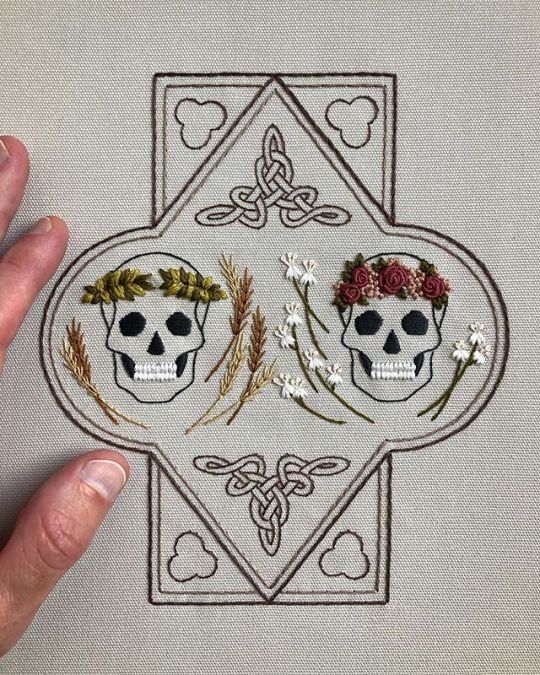

Beast Or God | Instagram: @beastorgod
29K notes
·
View notes
Text
Never said anything about white sage being endangered, keep in mind. Said it was harming the species, in that post.
That said.
1) who the FUCK cares if the government thinks it’s endangered. CERTAINLY not this damn native.
2) I trust native elders on the subject 100000% more than some random white pagan on tumblr. And they say it’s being greatly impacted by consumerism and reckless consumption.
359 notes
·
View notes
Text
Amazing Things About Duat/ Tuat/ The Egyptian Underworld
◈ The Book of the Dead places this realm on the dark side of the moon
◈ was believed to be a realm of darkness, filled with lakes of fire.
◈ Between earth and the netherworld there was a great river in the sky that even the gods couldn’t pass .
◈ The only person who could pass it was the ferryman of the gods, a creature with eyes on the back of his head.
◈ Tuat literally means “Other World"
◈ There were Caverns, Deserts, forests of turquoise trees
◈ Ra’s Boat of Millions of Years was called the Manzet Boat in the dawn
◈ It’s colors are of amethyst and emerald, jasper and turquoise, lazuli and the lustre of gold
◈ Over the sand it glides as a boat glides over the water.
◈ portals of the Duat are at the Gap of Abydos
◈ there are monstrous many-headed serpents, gliding along the ground or creeping upon legs.
◈ On a sandbank in the midst of the river lies Apep. 450 cubits long is the sandbank; the coils of Apep cover it so nothing can be seen but the river around
77 notes
·
View notes
Link
Abortion isn’t the lesser of two evils–it is a just and good thing. So says Reverend Katherine Ragsdale:
Let’s be very clear about this: when a woman finds herself pregnant due to violence and chooses an abortion, it is the violence that is the tragedy; the abortion is a blessing.
When a woman finds that the fetus she is carrying has anomalies incompatible with life, that it will not live and that she requires an abortion — often a late-term abortion — to protect her life, her health, or her fertility, it is the shattering of her hopes and dreams for that pregnancy that is the tragedy; the abortion is a blessing.
When a woman wants a child but can’t afford one because she hasn’t the education necessary for a sustainable job, or access to health care, or day care, or adequate food, it is the abysmal priorities of our nation, the lack of social supports, the absence of justice that are the tragedies; the abortion is a blessing.
And when a woman becomes pregnant within a loving, supportive, respectful relationship; has every option open to her; decides she does not wish to bear a child; and has access to a safe, affordable abortion — there is not a tragedy in sight — only blessing. The ability to enjoy God’s good gift of sexuality without compromising one’s education, life’s work, or ability to put to use God’s gifts and call is simply blessing.
These are the two things I want you, please, to remember — abortion is a blessing and our work is not done. Let me hear you say it: abortion is a blessing and our work is not done. Abortion is a blessing and our work is not done. Abortion is a blessing and our work is not done.
What really impresses me about Ragsdale is this bit:
The idea that abortion kills a child, she contends, reflects parental hopes and dreams for the child-to-be, not the reality of what the zygote or fetus actually is. (It is, in her words, “proleptic,” a theological term for anticipated realities that come to be treated as extant in the here and now.) When pro-choice forces signal their partial acceptance of the abortion-as-child-murder idea, says Ragsdale — which they do when they speak of the “tragedy” of abortion — they may be motivated by political concerns, or by a desire to be respectful and conciliatory. But in the process, they’re ceding precious intellectual ground to abortion opponents, and backing themselves into a tactical corner: how, after all, can you effectively defend something for which you’re simultaneously apologizing?
What’s more, they’re also increasing the likelihood that women who do choose to have abortions will spend their lives tormented by needless guilt. “I suppose it’s possible for an intelligent, faithful person to still believe that there’s no moral difference between a zygote and a baby,” Ragsdale allows. “But there’s no reason for most of us to believe that. And I don’t.”
…”If you want a baby,” says Ragsdale, “and you’ve decorated the nursery, and bought the toys, and named the baby — and then they discover the baby’s organs are growing outside the body, and not only will the baby not survive, but the woman will be torn up trying to deliver it — there’s a tragedy. But the tragedy isn’t the abortion — the tragedy is that you needed one.
I know this won’t convince the hardcore anti-abortionists, but it refreshing to see someone refusing to cede the moral high ground.
11K notes
·
View notes
Video
tumblr
Flying fox bat eating some frööt
112K notes
·
View notes

